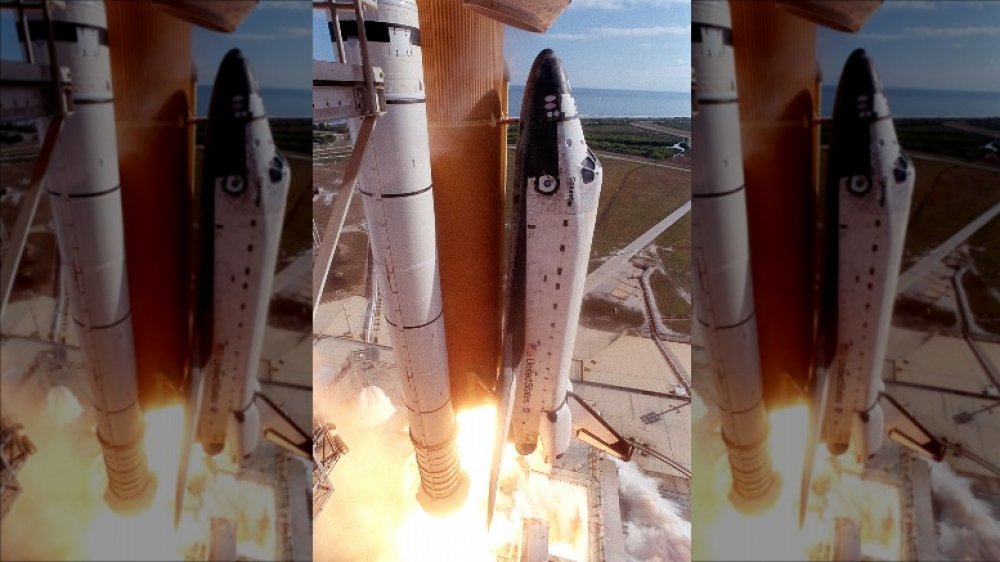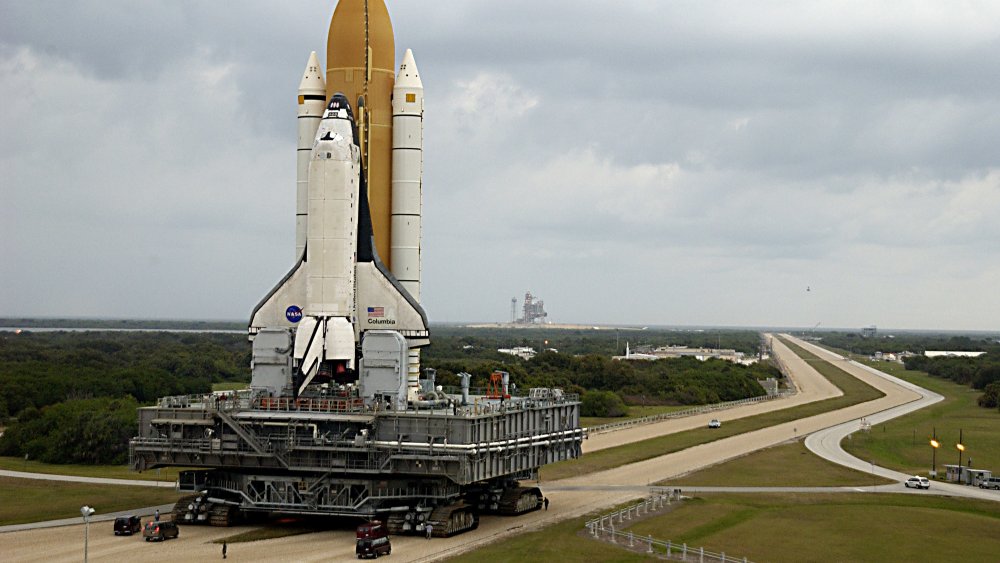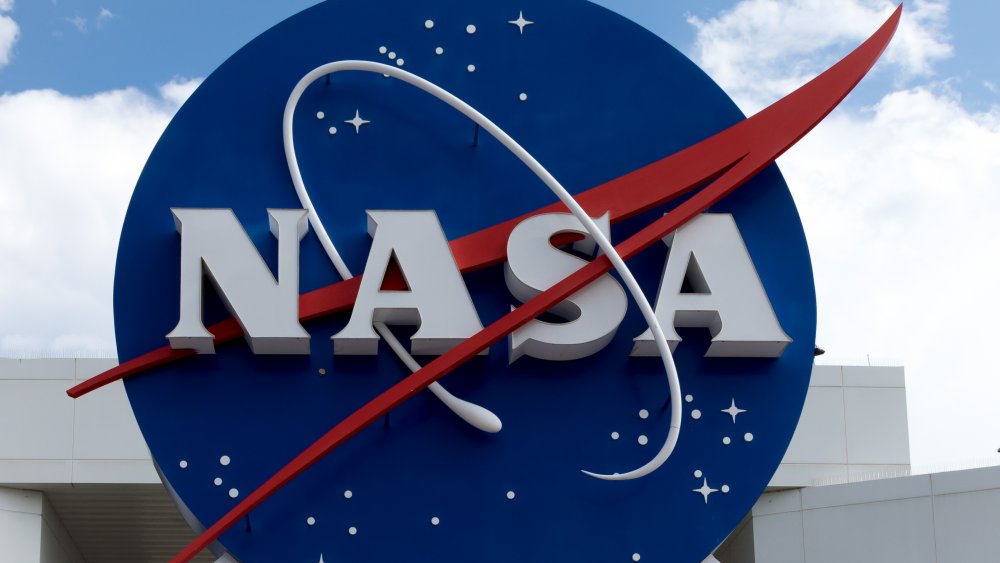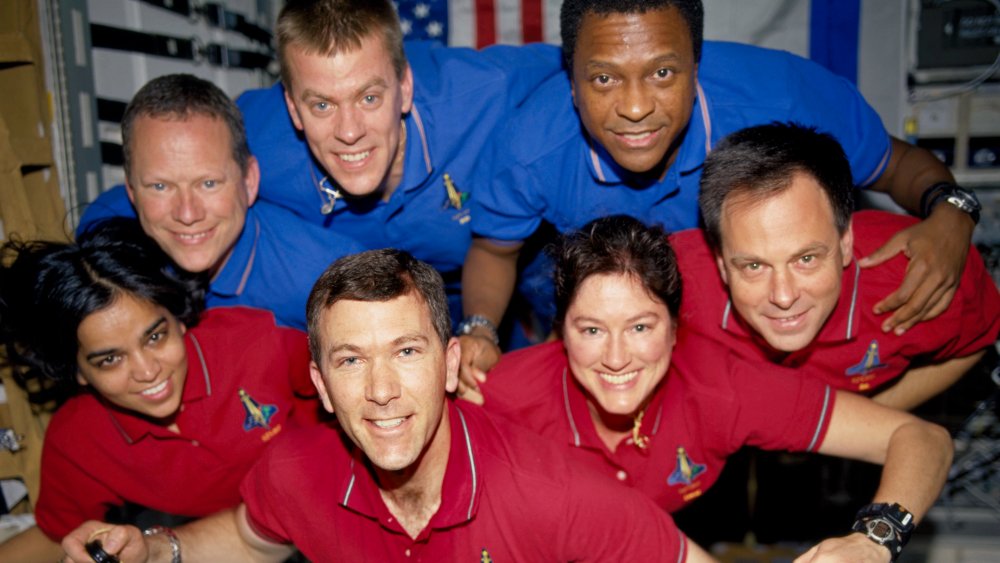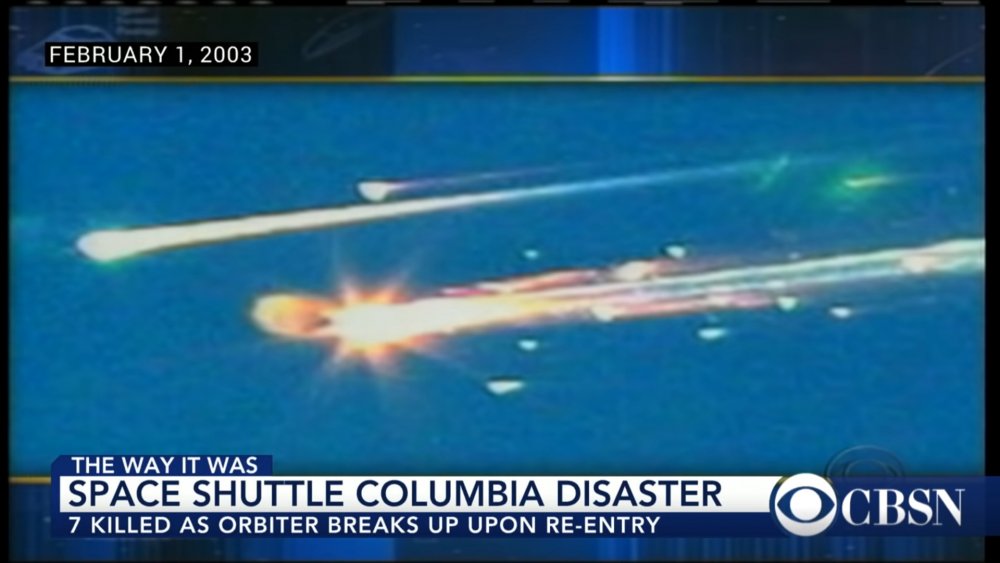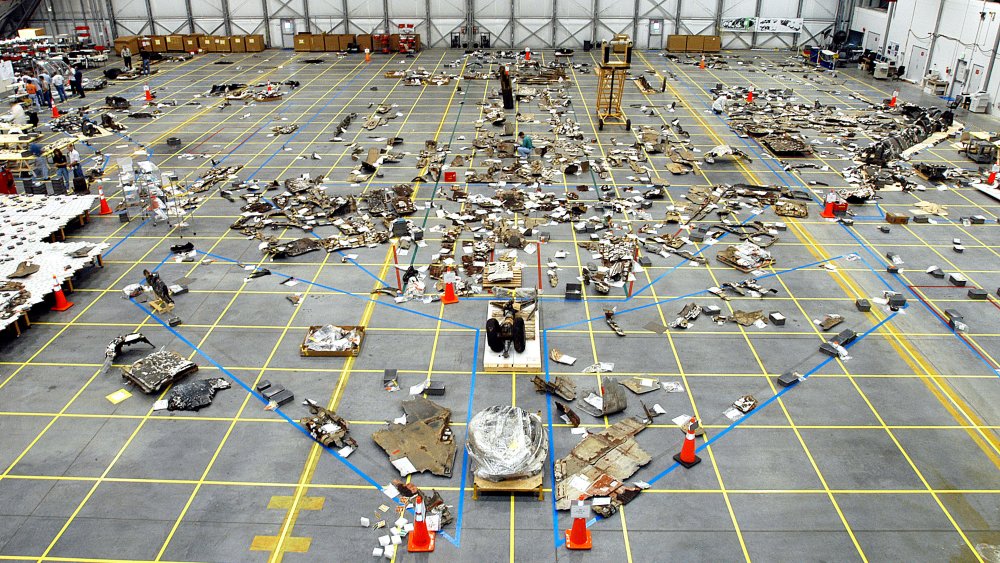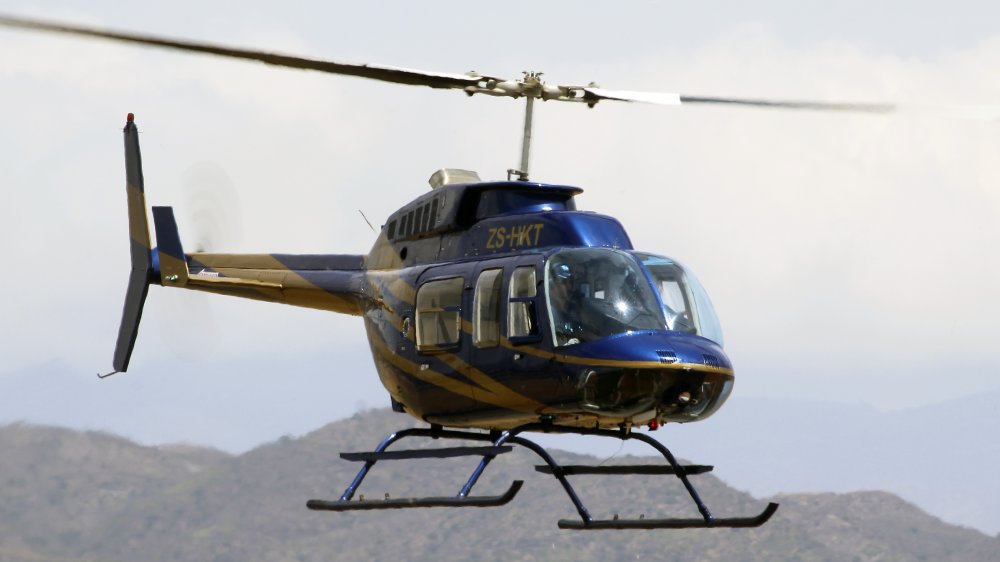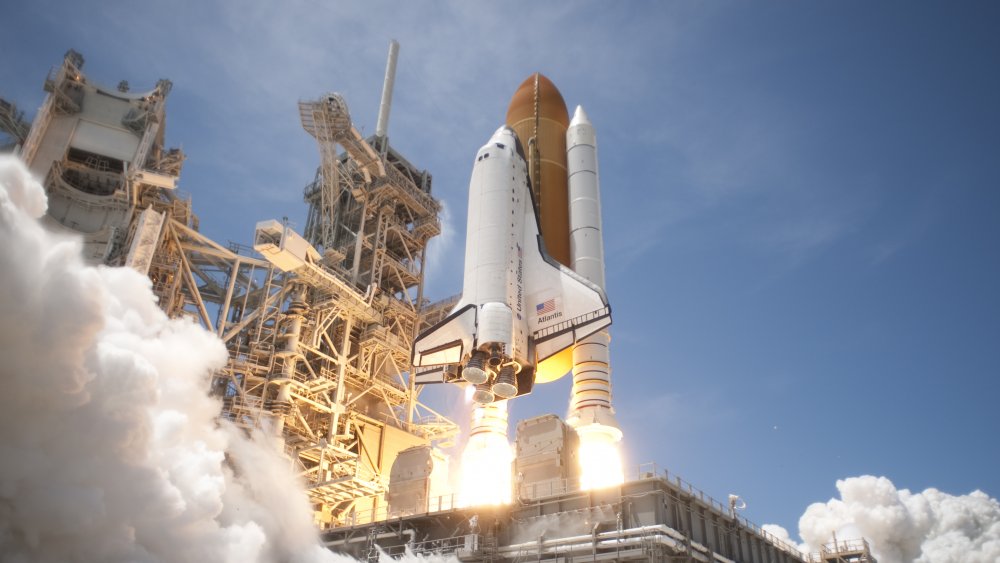The Worst Part Of The Space Shuttle Columbia Disaster Isn't What You Think
February 1, 2003, began as a normal Saturday morning for many Americans, until news began to filter in that a space shuttle had been lost. Before long, TV screens were filled with images of burning debris streaking through the sky, and reporters began piecing the story together. Heat-resistant tiles on the Space Shuttle Columbia's left wing had been damaged, leading to the destruction of the spacecraft, as well as the deaths of seven astronauts — Rick Husband, William McCool, Michael Anderson, Kalpana Chawla, Laurel Clark, Ilan Ramon, and David Brown — as Columbia reentered Earth's atmosphere.
It was a disaster on par with the loss of the Space Shuttle Challenger 17 years before, and the fiery disintegration of Columbia ultimately led to the retirement of NASA's shuttle fleet. The loss of life and the crippling of the United States' space exploration capabilities are terrible enough, but as is all too often the case, tragedies are multifaceted. As you'll soon find out, the worst part of the Space Shuttle Columbia disaster might not be what you think.
The Space Shuttle Columbia was doomed from the start
Columbia's 28th trip into space was long overdue, the mission having been delayed (per History) for two years as a result of one issue or another, but the shuttle finally lifted off on January 16, 2003. Though Columbia would spend a bit over two weeks in orbit, its fate was sealed a mere 81 seconds into its mission. That's when a piece of foam from the external fuel tank came off and damaged the shuttle's left wing, a blink-and-you'll-miss-it blow that would have fatal consequences.
According to the Columbia Accident Investigation Board, at 81.7 seconds after liftoff, a sizable chunk of insulating foam (as well as at least two other pieces) came free from the external fuel tank's left bipod and tumbled toward Columbia, the big piece striking the underside of the orbiter's left wing a fifth of a second later. The foam chunk was about two feet long and a foot wide, and it hit the wing's heat-resistant panels at a relative speed of roughly 500 miles per hour. At the time the fatal blow was struck, not one person in the shuttle or on the ground had any idea what had just happened, nor was there any indication of a problem when video of the launch was reviewed two hours later. It wasn't until the next day, when better quality film was examined, that the foam strike was spotted.
NASA knew that foam strikes could be dangerous
Foam striking the orbiter during liftoff was hardly a novel concept. In fact, it'd been a concern since before the first shuttle flew. To be clear, the external fuel tank's insulating foam was absolutely necessary, as it kept the liquid oxygen and hydrogen inside from boiling and ice from forming on the tank. (Then the shuttle would be pelted with ice as it took off.) The foam was indispensable, so the space shuttle's original design requirements mandated that debris shouldn't come off the tank, an event which scientists knew could damage the orbiter's fragile heat-resistant tiles.
Initially, it was believed that only miniscule bits of foam would come off and hit the orbiter, but actual test flights indicated otherwise. After Columbia made the first-ever shuttle flight in 1981, it was found that the spacecraft had been bombarded by tank foam during its ascent. Over 300 tiles had to be replaced, and engineers remarked that had they known the tank would toss so much foam, they would've been hesitant to clear Columbia for liftoff.
As detailed by the Columbia Accident Investigation Board, subsequent flights showed that Columbia's foam shower wasn't an isolated incident, with most launches involving impacts. Despite this, little was done about the issue. Though NASA had looked into designing impact-resistant tiles, the agency concluded in 1990 that the odds of foam shedding leading to the loss of a shuttle were rather low.
NASA prevented better imaging of the Columbia
On January 17, 2003, a day after what would be Columbia's final liftoff, NASA's Intercenter Photo Working Group (IPWG) reviewed high-resolution footage of the launch and saw that an exceptionally large piece of foam had struck the shuttle's left wing. Immediately concerned that severe damage could've been done to the heat-resistant tiles there, Bob Page, the group's chair, quickly went to another official and asked him to contact the Department of Defense to obtain images of Columbia. Meanwhile, the IPWG reported the strike to NASA and its contractors, after which a Debris Assessment Team (DAT) was formed.
After the DAT's first formal meeting three days later, team member Bob White made a request of his own for imaging of Columbia's left wing, as did Rodney Rocha, the DAT's co-chair. According to the Columbia Accident Investigation Board, all three requests were ultimately stopped by another NASA official, Linda Ham, who'd learned of the requests but concluded based on conversations with Mission Management Team members that imaging wasn't required. Ham allegedly also expressed misgivings about the extra time that would be required to move Columbia into a position favorable for imaging its left wing. As History tells it, another factor in the decision not to image the shuttle was a prevailing belief among NASA's higher-ups that nothing could be done if the damage was bad. On the other hand, Ham would later claim to have had no knowledge of the DAT's concerns.
The danger was downplayed to the crew
Without images of Columbia's left wing, the Debris Assessment Team was left with little to go on. Per the Columbia Accident Investigation Board, they turned to a software program called Crater to try to guess what kind of damage the foam strike might've done, although Crater hadn't been created specifically for predicting thermal protection system tile damage. From their improvised analysis, the team concluded that at least some heat damage would be sustained when the shuttle reentered the atmosphere, but they couldn't conclude whether the orbiter's structure would be compromised. Many team members remained concerned about what would happen when it was time for Columbia to come home.
Meanwhile, a week into the mission, NASA e-mailed crew commander Rick Husband and pilot William McCool and informed them of the foam strike. As noted by Spaceflight Now, this communication made the impact out to be a nonissue. After describing what had happened, the e-mail — sent two days before the DAT concluded their attempted prediction of the damage — stated that there was "no concern for RCC or tile damage" and elaborated that similar incidents had occurred on "several other flights." Husband and McCool were told that the foam strike wasn't even worth mentioning, and that they were being informed only so they wouldn't be surprised if any reporters asked about it once they'd returned to Earth. The next day, Husband replied to flight director Steve Stich, "Thanks a million, Steve!"
The astronauts' grisly fate
On the morning of February 1, 2003, after 16 days in space, it was time for Columbia to return. As detailed by the Columbia Accident Investigation Report, as the shuttle was streaking over California at 8:53 AM EST, witnesses reported seeing several flashes of light, which brightened Columbia's trail. Four sensors in the shuttle's left wing had mysteriously gone dead a minute later. Columbia shed a heat-resistant tile as it crossed from New Mexico into Texas at 8:58, and a final, unintelligible communique came from the orbiter a minute later. At 9:00 AM, observers on the ground could see that Columbia was in pieces.
According to ABC News, a report released by NASA in 2008 indicated that the first alarm to sound inside the shuttle would've come only four seconds before Columbia spun out of control. However, either Rick Husband or William McCool remained conscious for an additional 26 seconds, desperately attempting to save the crew. Soon afterward, the cabin would've depressurized as the orbiter was torn apart.
Most of the debris from Columbia ended up scattered across East Texas, sowing chaos as the smoking wreckage rained down ... including what remained of the crew. In Norwood, as reported by The Telegraph, a charred helmet was discovered embedded in the ground, and more remains — such as a hand, a foot, a skull, and a heart — were found elsewhere. By February 13, per CNN, remains from all seven astronauts had been identified.
People tried to sell pieces of the Columbia on eBay
Immediately after Columbia's destruction, thousands of pieces of the doomed orbiter came to rest across Texas and Louisiana. Despite attempts by local police to keep the public away, bits of debris billed as being from Columbia showed up on eBay within hours of the incident. As reported by the BBC, NASA wasn't happy, and the agency stated unequivocally that any part of the shuttle was property of the US government and that anyone caught with debris could be charged with both theft and interfering with a government investigation. Meanwhile, eBay set about removing all Columbia debris auctions and further reiterating that such sales were banned. This, however, didn't stop auctions for memorabilia related to the shuttle's final mission, such as patches and photos of the crew, from springing up. In fact, there were over 1,500 of these listings on eBay two days after the orbiter's breakup.
In an attempt to recover more pieces of Columbia, the US government enacted a three-day amnesty period, during which anyone with debris could turn it in without penalty, starting on February 5. According to the Star-News, hundreds of pieces were brought in during those three days, but afterward, the government still had at least nine more people in their sights for debris hoarding, and charges were pending. At least two had already been arrested before the amnesty period, each of whom faced up to ten years in prison.
Two more people died searching for debris
The amount of area over which Columbia's wreckage was scattered prompted a massive recovery effort, comprised of both air and ground crews, with personnel from across the country descending upon East Texas. By late March, more than 900 pieces of debris had been recovered from over a million acres of land, and the search was ongoing. During the afternoon of March 27, pilot Jules Francis "Buzz" Mier and Texas Forest Service aviation specialist Charles Krenek were flying a helicopter carrying three passengers, Kennedy Space Center employees Richard Lange and Ronnie Dale and Matt Tschacher of the US Forest Service. As detailed by Check-Six, the aircraft was searching for debris near the Angelina National Forest in San Augustine County, Texas.
According to a pair of nearby fishermen, as the helicopter was flying close to the treetops, its engine suddenly cut out, and the vehicle crashed first into the trees and then the swampy ground below. The fishermen pulled a severely injured Lange, Dale, and Tschacher out of the cabin, but Mier and Krenek had died instantly. All aerial searches were put on hold until April 10, and it was eventually determined that the helicopter had gone down due to failure of a component meant to meter the fuel entering the engine. Krenek was awarded the Star of Texas in 2004, and a monument to the Columbia crew in Hemphill, Texas, also includes a pillar inscribed with Mier's and Krenek's names.
The Columbia crew could've been saved
In the aftermath of the incident, investigators inevitably asked the million-dollar question: Would it have been possible to save Columbia's crew? According to the Columbia Accident Investigation Board, had the damage to the left wing been detected by either imaging or spacewalk, it might've been doable. NASA considered two scenarios — the astronauts repairing the damage themselves or the Space Shuttle Atlantis, which was next up to launch, lifting off early to rescue them.
It was determined that had Columbia's crew rationed their consumables (including the carbon dioxide scrubbers), they could've remained in orbit until February 15, 30 days after liftoff. Although returning home after performing a field repair on the wing would've been possible, it would've been risky, making rescue the safer option. Atlantis was originally slated to lift off on March 1, but had crews worked around the clock, the shuttle could've been safely launched as soon as February 10, five days before the deadline. As it turned out, the weather on February 10 through 15 would've allowed liftoff. Once the two shuttles met, Columbia's crew would've spacewalked over to Atlantis, after which Columbia would've been either ditched or left in orbit for later repair.
For the rescue scenario to have been possible, the damage to Columbia's left wing would have to have been discovered by the seventh day of the mission ... well after requests for imaging had been made.

